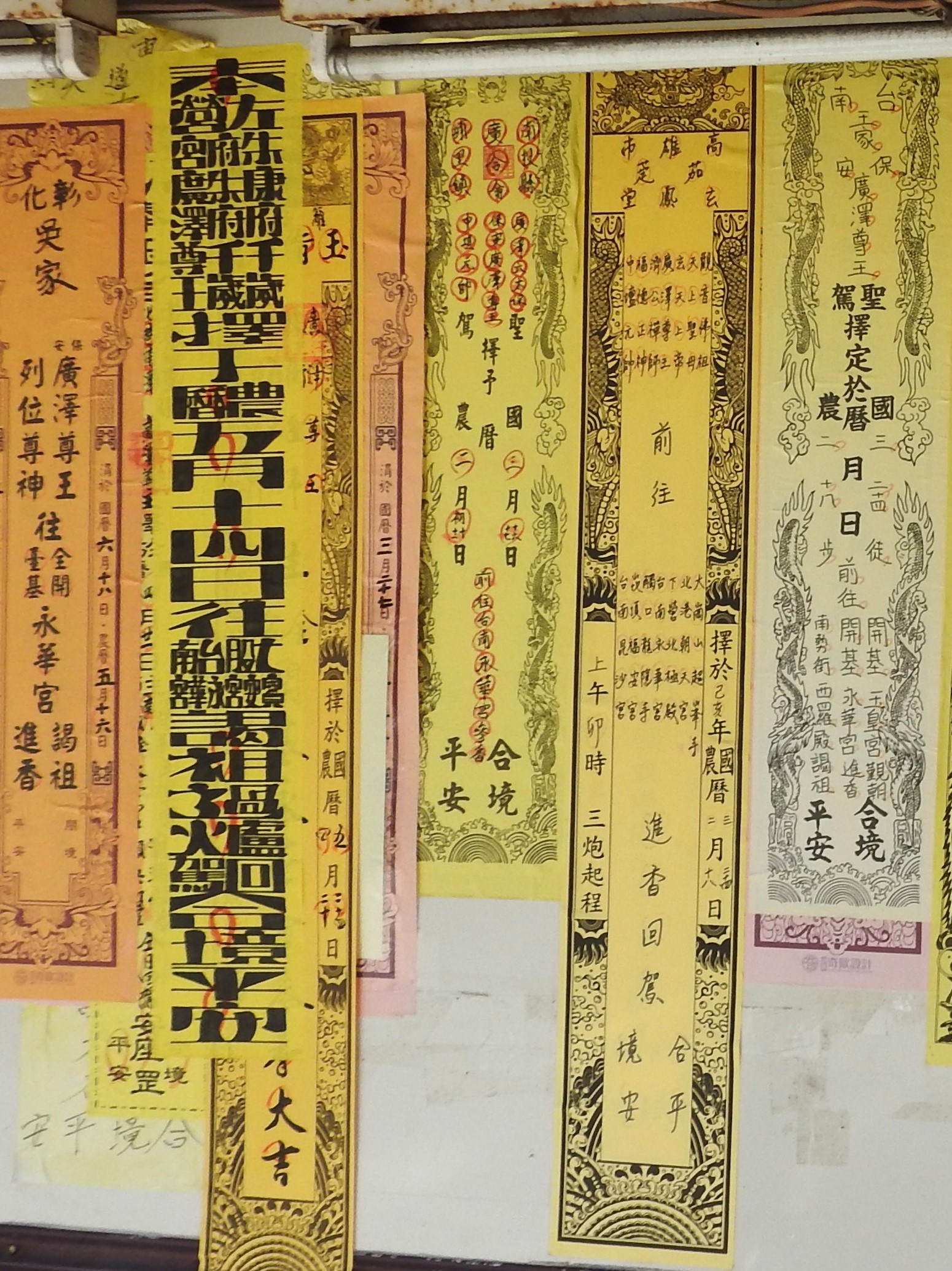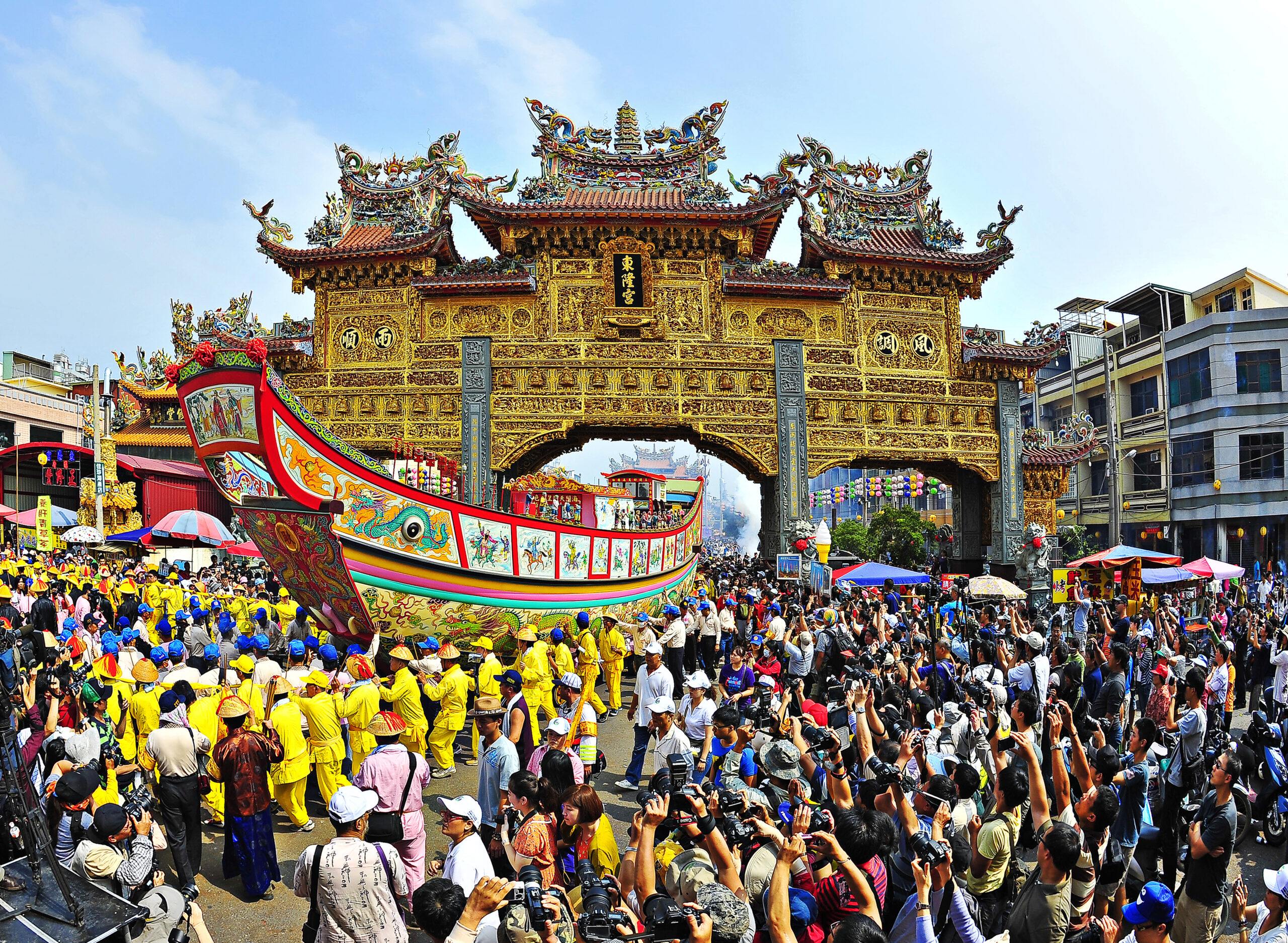
Yellow’s Radiance: A Beacon of Light
The affinity between Buddhism and the color yellow unveils intriguing insights. Firstly, yellow closely resembles daylight, a symbol of enlightenment and clarity. Siddhartha Gautama, later known as the Buddha, deliberately chose yellow as a symbol of humility and detachment from materialism. In his era, it was the color assigned to criminals, emphasizing his separation from society’s worldly desires.
Earth’s Hue: A Connection with Nature
Yellow is also hailed as the colour of the earth, echoing the rich, darkish soils that blanket most of Taiwan’s landscapes. This earthly connection is evident in local markets, where vibrant yellow fruits like bananas, starfruit, and red-heart pomelos grace the stalls, symbolising the sustenance that nature provides.

Donglong Temple King’s Boat Parade (Taiwan Tourism Bureau Photo)
Joss Paper and Sacred Traditions
Taiwanese traditions further illuminate the significance of yellow. Joss paper, used to honour deities and ancestors, especially during religious ceremonies, is often crafted in shades of yellow. In the past, this ceremonial paper was meticulously fashioned from rice straw, adding depth to its cultural importance. Moreover, the vertical strips of yellow paper affixed to bulletin boards outside temples serve as records of official visits by delegations representing affiliated shrines, illustrating how yellow permeates sacred rituals.
Butterfly Oasis: The Yellow Butterfly Valley
One of southern Taiwan’s treasured ecotourism destinations is the enchanting Yellow Butterfly Valley. Between May and July, this idyllic spot just outside the Hakka town of Meinong comes alive with the fluttering of millions of lemon emigrant butterflies. Surprisingly, this breathtaking phenomenon is the result of human intervention in nature’s course. During the period of Japanese rule in Taiwan before World War I, hop-hornbeam trees were planted in the area. These trees, valued for their wood used in railway sleepers and rifle stocks, happen to be the favoured food source of lemon emigrant butterfly larvae. The valley boasts over 100 butterfly species, making it a haven for serious butterfly enthusiasts and nature lovers alike. Whether you seek to observe these delicate creatures or simply immerse yourself in Taiwan’s natural beauty, the Yellow Butterfly Valley offers a captivating and easily accessible experience.
Tailor Your Luxury Tour of Taiwan
For a luxury tour of Taiwan tailored to your preferences, contact Life of Taiwan, a highly experienced Taiwan tour operator. Our dedicated travel designers are ready to assist you in planning a custom tour of Taiwan that aligns with your unique requirements.
